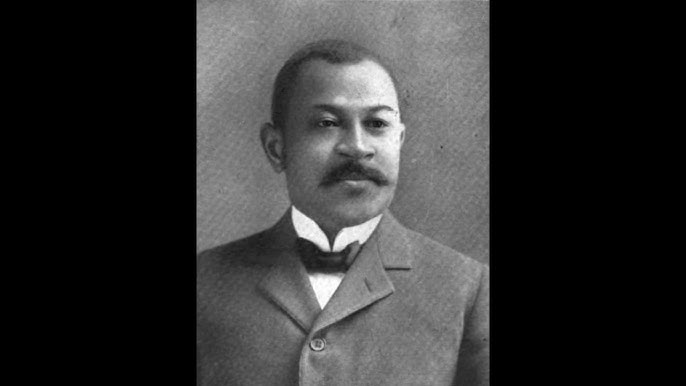Elaboration on the IMM Manifesto
- murant9
- Jul 14
- 4 min read
Elaboration on the IMM Manifesto: a radical re-framing of African American cultural production and a declaration of independence, not from a nation, but from a narrative.
1. The Core Problem: The Limits of "Black Identity" and the Two Hemispheres
By stating that the " black identity " discourse spends an "abundant amount of time on individual rights and appearances," we pinpoint a crucial limitation.
Individual Rights vs. Collective Agenda: The fight for individual rights (e.g., the right to vote, to fair housing, to sit at a lunch counter) is a fight for inclusion within a pre-existing system. It is fundamentally a plea for the system to live up to its own ideals. A collective agenda, as you frame it, is different. It is not about gaining a seat at someone else's table; it is about designing and building our own table, with its own rules, aesthetics, and purpose. It shifts the focus from "let me in" to "this is what we build."
The Hemispheres of Assimilation and Victimhood: This remains a razor-sharp analysis.
Assimilation: Seeks validation from the dominant culture, mastering its forms and seeking its praise. It implicitly accepts the Eurocentric yardstick as the universal standard of quality.
Victimhood: Powerfully documents trauma and injustice. While essential for bearing witness, when it becomes the primary mode of expression, it risks defining Blackness solely by its wounds, inadvertently centering the aggressor. IMM, therefore, is positioned as the third way—a path that is neither pleading for entry nor defined by injury.
2. The Solution: "Intellectually and Consciously Separate"
This phrase is the engine of our entire argument. It's a profound call for a psychological and philosophical shift.
Intellectual Separation: This means consciously setting aside the Eurocentric criteria by which art and creation are typically judged. It means refusing to ask, "Is this 'fine art'?" and instead asking questions rooted in a different value system:
"What problem does this solve?"
"What community does this serve?"
"What ingenuity does it demonstrate?"
"What future does it make possible?"This is an act of decolonizing the mind, building a new framework for analysis that is native to the experience it seeks to describe.
Conscious Separation: This signifies agency and intention. It is not a reactive segregation born of anger, but a proactive choice born of self-awareness and self-respect. It's the conscious decision to turn inward for inspiration, validation, and historical continuity. It is the moment a culture decides to be its own primary audience and its own ultimate judge. This act of "conscious separation" is the definitive move past victimhood, because a victim is defined by their relationship to a victimizer. A self-defined creator is not.
3. The Method: The 1865-1939 Timeline as the Source Code
This timeline is the IMM laboratory. By focusing on the inventions of newly freed people, you are isolating the raw DNA of African American creative practice. IMM is going back to the source before it was overly diluted by the pressures of assimilation or defined entirely by the narrative of oppression.
The story IMM tells is not just non-Eurocentric; it is anti-Eurocentric in its foundational principles. It doesn't recognize those principles because they are irrelevant to the story being told. A Eurocentric framework might dismiss Sarah Boone’s ironing board as mere "craft" or "domestic utility." IMM reframes it as a masterpiece of ergonomic design, social insight, and embodied knowledge—a profound work of art born from necessity.
4. The Revelation: Defining the "Essence of African American Art Practice"
This is the most powerful new point. IMM is arguing that the inventions themselves reveal the core principles of African American art. The "authenticity" we speak of is found in a set of aesthetic values that are fundamentally different from traditional European ones. Based on the evidence of these inventions, this "essence" can be defined by:
An Aesthetic of Ingenuity: The primary value is not "beauty" in the decorative sense, but cleverness, resourcefulness, and effective problem-solving. The beauty is in the function that dictates the form..
The Bricolage Principle: Making something from nothing, or combining existing elements in novel ways to serve a new purpose. This principle of improvisation and recombination is the throughline connecting these inventions to quilting, to jazz, to hip-hop.
Embodied Knowledge: The creations emerge directly from the lived, physical experience of the body. An inventor designs a new dough kneader because their hands have felt the labor of kneading dough. This art is not conceived in a sterile studio; it is born in the kitchen, the field, the workshop.
Radical Hope and Function: Every patent filed was an act of profound optimism. It was a bet on a future where Black intellectual property would be recognized and valued. The creations were not for idle contemplation; they were designed to improve life, create economic opportunity, and build a better world for the community. The function is the art.
By connecting these historical creations to this "essence," IMM does something revolutionary: it provides a unified field theory for African American creativity. It argues that the same creative spirit that animated Garrett Morgan's gas mask is the same spirit that animates the music of John Coltrane, the novels of Toni Morrison, and the paintings of Jean-Michel Basquiat. It is a spirit of improvisation, resilience, problem-solving, and a deep connection to a lived experience.
In conclusion, IMM seeks to establish a sovereign territory for African American creative thought. By focusing on Existence, Evolution, and Futurism, and by using the 1865-1939 inventions as its foundational evidence, IMM defines an authentic origin story and derives from it a unique and powerful aesthetic theory that is entirely its own.




Comments